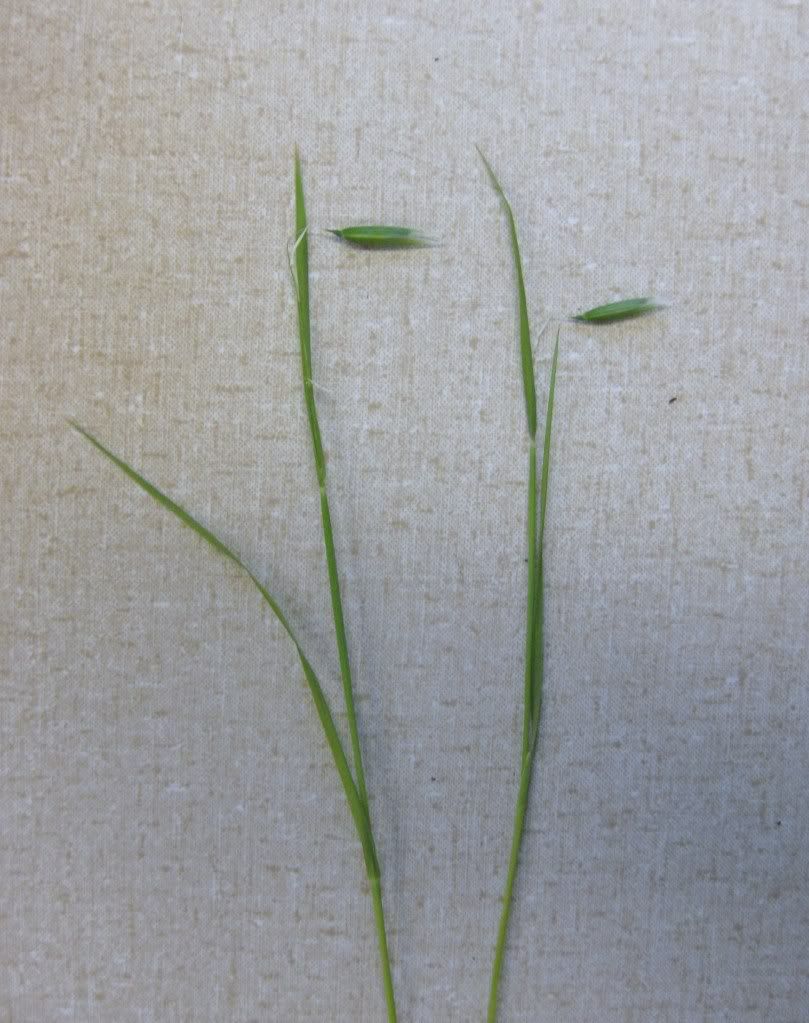POACEAE (GRAMINEAE) - Grass Family
---
---
The stem part of Miscanthus sinensis, note the 2-ranked (i.e. arranged in two rows) and alternating leaves.
Leaf of M. sinensis that was removed from its stem. In this species, the sheath do not close off on the stem, and the sheath is said to be "open".
Most grasses have hollow culms (stems), but the above plant has pith in its stems as shown in the section. Nodes are the only solid structures in stems.
Avena sativa (oats) have panicles as their inflorescence.
A spikelet from the oat inflorenscence.The 2 leafy structures on either side are glumes and the centre structure is the floret. Note the small "dud" floret which failed to develop.
The lemma and palea are teased apart to reveal the other sexual floral organs: stimga and style, stamens, and ovary.
The stigma & style are the feathery structures that are attached to the ovary. The function of the stigma and style is to capture the pollen grains from the hair and the fluffy structures increases their high surface area. Thank you goes out to Yee Sing for taking this photo.
This photo shows 2 of the 3 stamens.
In Triticum sp.(wheat), the spikelet is longer than the glumes that encloses it. Each of the florets have long awns coming out of them.
The two protrusions at the base of the blade (top of the sheath) are the auricles.
Inflorescence of Lolium sp. is a spike (the spikelets are sessile on the stem/rachis).
Each spikelet in Lolium has 2+ florets (the one above has 3). Upon closer inspection, an unusual feature is found - this genus has 1 glume per spikelet.
But like the most of the grasses, Lolium stems are hollow.
The sheath in Poa is opened halfway down the stem.
A characteristic of Poa plants is the prow-like (front of a canoe or ship) leaf tips.The leaves are folded as opposed to rolled.
This is an example of a rolled leaf (the twisting of the leaf blade).
















MIDDyyy i need this to stuuddyyy :)
ReplyDelete